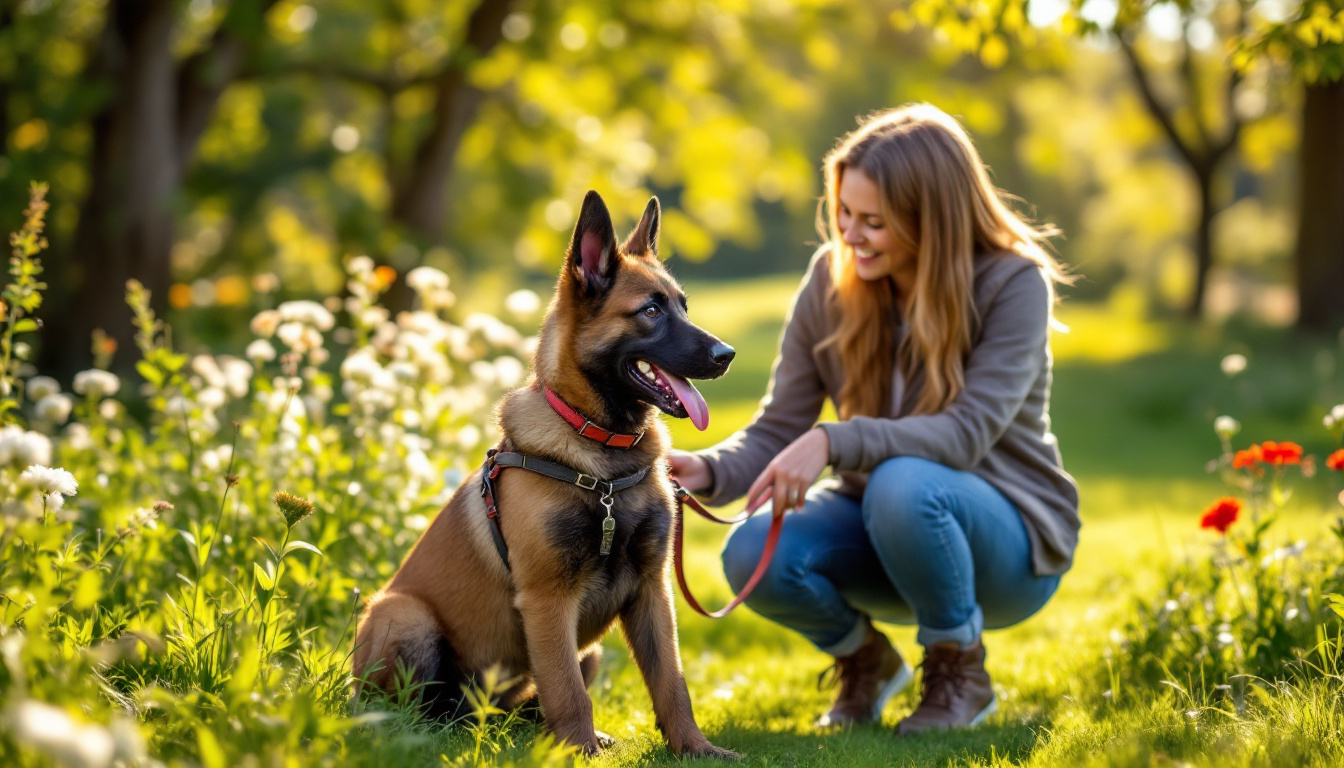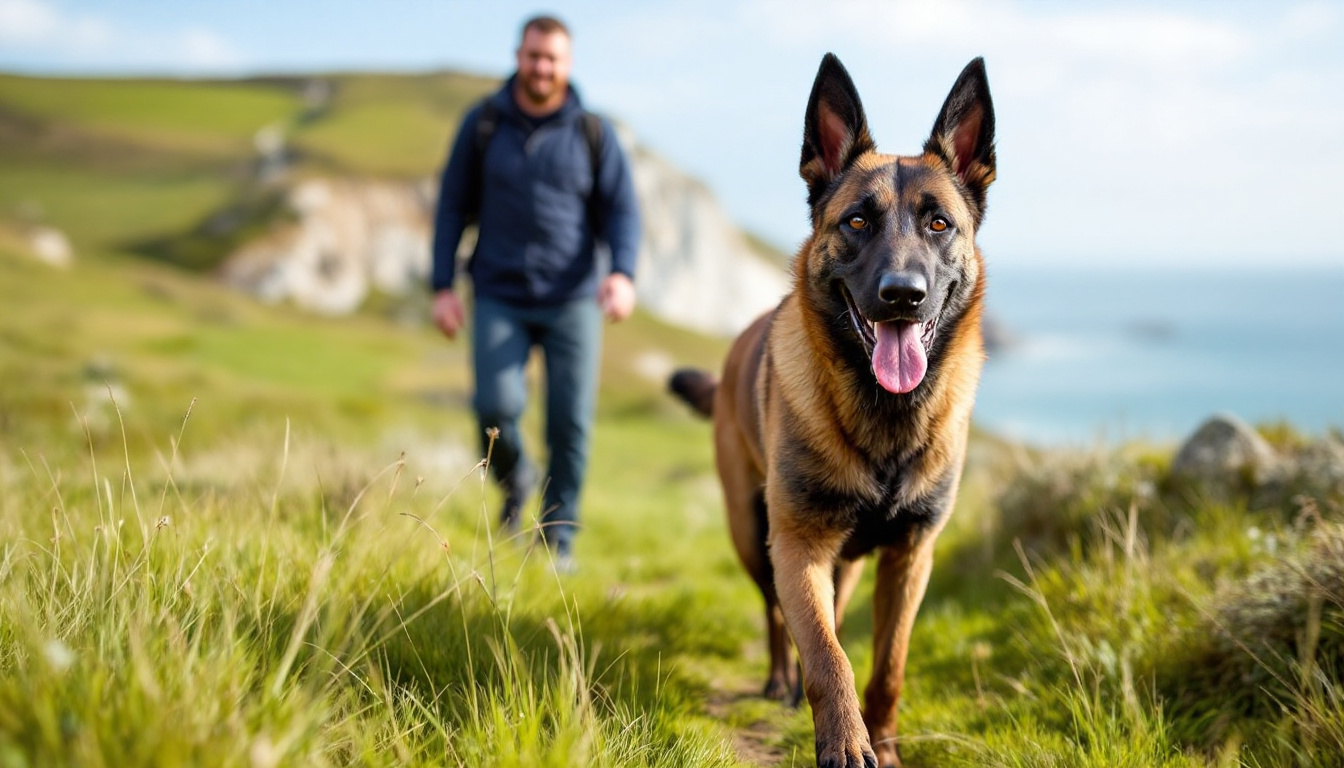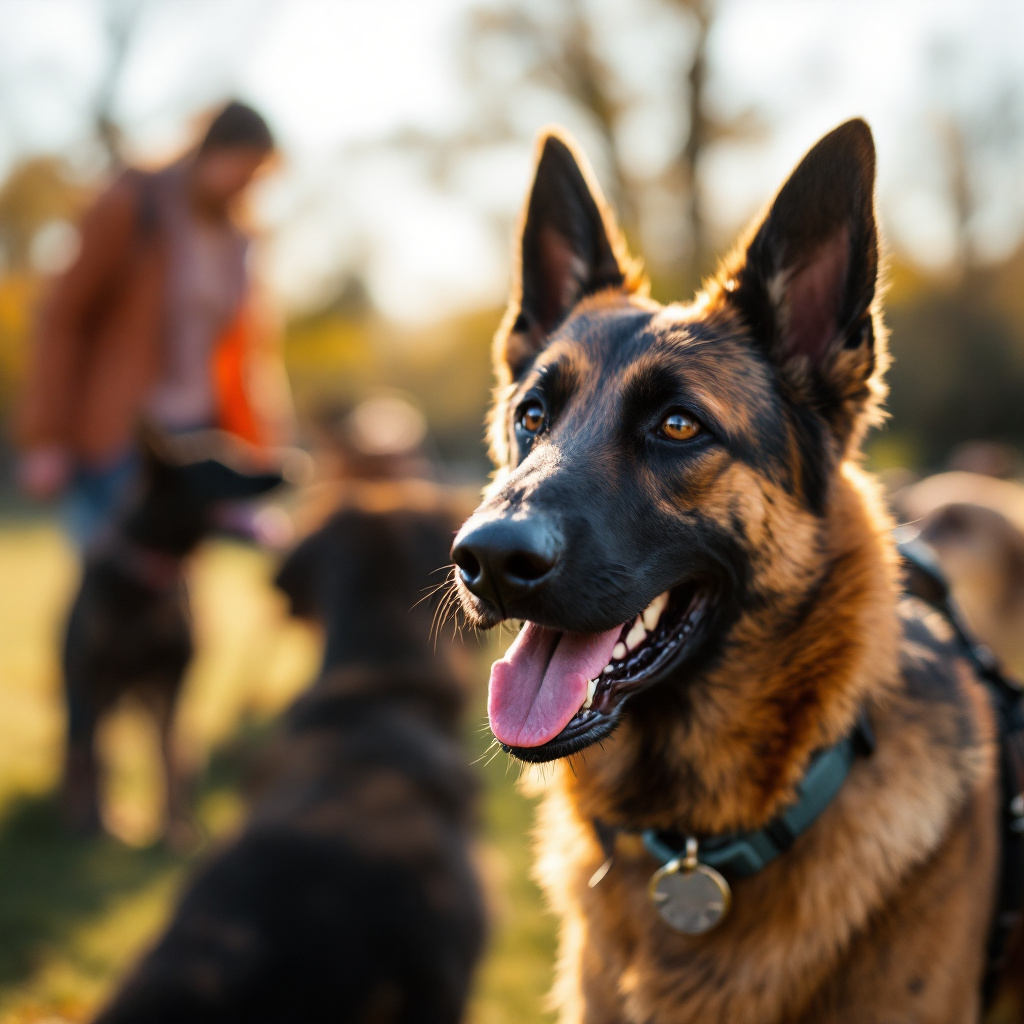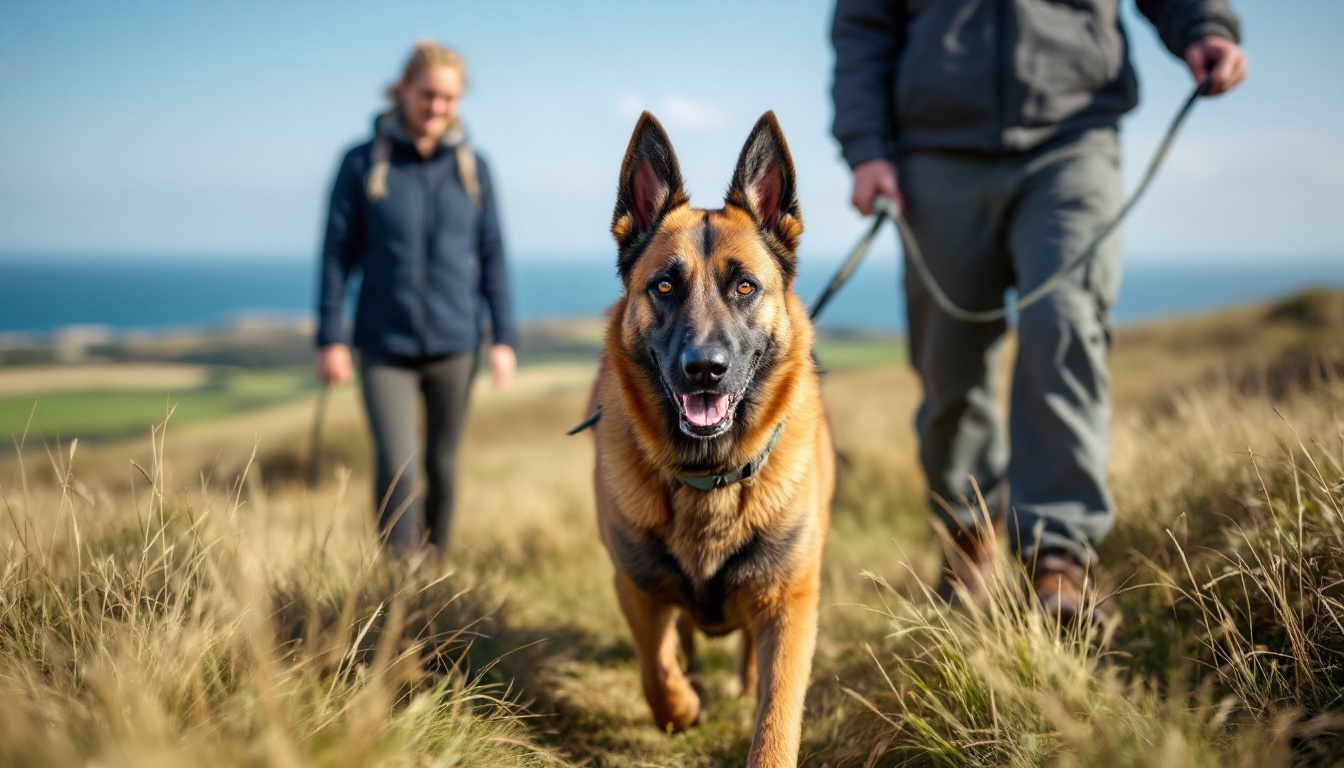The Truth About Temperament, Training, and Local Dog Walking Services
Wondering if Belgian Malinois are aggressive? Most Belgian Malinois aren’t naturally aggressive.
They’re clever, energetic, and thrive on regular activity, but, like any smart breed, they need positive training and plenty of attention to shine.
This blog is for dog owners, the curious, or anyone considering a Belgian Malinois and looking for reliable local dog walking.
We’ll clear up some stubborn myths about the breed’s temperament with real facts and advice.
Daily dog walks, early socialisation, and choosing a professional dog walker can help channel their lively nature in safe, healthy ways.
If you’re searching for “pet walking near me,” dog exercise services, or trusted puppy walking services in East Cornwall, you’re in the right spot.
Our local expertise covers everything from group dog walks to tips on affordable dog walking rates. With support and know-how, this wonderful breed can become a loyal and loving companion.
For more about their background and traits, you can check the Belgian Malinois Wikipedia page.

Understanding Belgian Malinois Temperament
When people ask, “are belgian malinois aggressive,” most find the truth far gentler than the myths. Belgian Malinois are not naturally aggressive dogs.
They’re quick to learn, eager for engagement, and happiest when life gives them a clear sense of purpose.
The more you understand their drive and quirks, the better you’ll set them up for success—especially when working with local dog walking services or seeking a reliable dog walker in East Cornwall.
If you’re curious about their social side, follow along as we explore their true nature and everyday needs.

What Drives the Belgian Malinois’ Temperament
Belgian Malinois love to work—and that shapes everything about who they are.
These dogs are never happier than when given a challenge or job, whether it’s herding, training sessions, or interactive play.
Regular tasks, structure, and positive challenges turn their high energy into loyalty and sharp focus.
You’ll notice their core temperament in daily life:
- High energy and stamina: Expect a Malinois to need more movement than a typical pet.
- Strong bonds: They prefer to stay close to their trusted people, sometimes following them from room to room.
- Natural protectiveness: With their family, they’re gentle and loyal.
- Drive for activity: Mental games and structured walks bring out their best.
For owners using dog walking services or seeking puppy walking services, understanding this drive is essential.
If you skip daily dog walks or rely on passive time alone in the garden, expect a Malinois to make their own fun—which can mean chewing, barking, or mischief.
Common Misconceptions
It’s easy to see why Belgian Malinois get mistaken for aggressive dogs. Their intense stare and focus, shaped by generations of working roles, can look intimidating.
But are Belgian Malinois aggressive by default? Not at all. It’s a myth born of misunderstanding, not fact.
Let’s clear up a few points:
- Aggression is uncommon in well-socialised Malinois. Issues usually appear when they’re under-exercised or anxious.
- They’re not just for police or military work. They make loyal, silly pets when given routines and positive training.
- They don’t “need” to be tough to thrive. Most Malinois are happiest with quiet structure, gentle company, and clear expectations.
If you’re seeking affordable dog walking rates or searching “pet walking near me,” know that professional dog walkers who value enrichment and patience can help these dogs shine.
For further reading on the topic and to hear from other owners, you might check out this discussion on Malinois progressively getting more aggressive—a good reminder that aggression is more about context and experience than breed destiny.
Reading Body Language and Signals
The best way to avoid misjudging a Malinois is to learn its signals.
Most use a mix of body cues to communicate moods or stress—skills all reliable dog walkers and group dog walks leaders need.
Here’s what to look for:
- Bright eyes, perky ears, wagging tail: Excited, ready for instruction or play.
- Stiff body, direct stare, lifted lip: Anxious or upset—time to redirect calmly.
- Crouched posture, tucked tail: Feeling worried or insecure. Give reassurance and space.
Think of reading their mood as checking the “fuel gauge” before a journey.
If you pick up warning signs, you can adjust plans—maybe swap to a different route, shorten the walk, or mix in more focus games like fetch or scent work.
Dog care pros rely on these signals, especially when working in public spaces or offering dog exercise services.
To help your Malinois enjoy new experiences, check out resources on handling loose aggressive dogs on walks for gentle strategies during uncertain moments.
The American Kennel Club offers a simple overview of how to interpret dog body language, which you may find helpful: How to Read Dog Body Language.

Nurturing a Sound Temperament with Training and Routine
If you’re pondering daily routines for your Belgian Malinois, remember: structure brings out the best in this breed.
Whether you choose daily dog walks with a professional or mix in your own lively training, consistency matters.
Try these tips:
- Daily exercise and stimulation make for a mellow home life. Long walks, training periods, or group dog walks tap into their natural energy for good.
- Gentle introductions to new sights, sounds, and people curb anxious reactivity.
- Simple obedience cues build self-control and focus (think “sit,” “wait,” “heel” on a walk).
- Routine is your secret weapon. Keeping dog walking times and meals steady makes the world less unpredictable.
If you’re unsure what gear fits best, you can discover a guide to harnesses for big dogs for added control and safety, especially when managing a Malinois’ energy outdoors.
Community, Support, and Practical Help
Living with a Belgian Malinois is a team effort. Reliable community, helpful information, and access to local dog walking services or trustworthy puppy walking services can be game-changers.
Whether you’re updating routines, looking for a reliable dog walker, or just starting your journey, support is at hand.
For more about the breed’s technical traits and broader background, give the Belgian Shepherd Wikipedia entry a glance to put today’s Malinois in a larger context.
Armed with understanding and proactive care, owners and local dog walkers alike can help these exceptional dogs flourish—no matter what adventure East Cornwall brings next.
Factors Influencing Aggression in Belgian Malinois
When talking about “are belgian malinois aggressive,” it’s important to look closely at daily habits, training, and the local support available to owners. Aggression isn’t the default for this smart, active breed.
Instead, most issues start when needs like exercise, routine, and positive social contact aren’t being met.
With some planning, reliable local dog walking, and a little know-how, you can help your Malinois shine as a loving, steady companion in East Cornwall.
The Importance of Proper Exercise and Mental Stimulation

Belgian Malinois need more than a backyard run to keep their minds and bodies satisfied.
The answer to “are belgian malinois aggressive” often comes down to how much healthy activity they get. Without daily dog walks, structured play, or mental games, boredom and frustration can build up.
This can turn into problem behaviors and occasional signs of reactivity.
Here are proven strategies for keeping your Malinois happy and well-adjusted:
- Prioritize daily dog walks. Regular movement is their baseline. Mix up your walking routes in East Cornwall—local woodlands, coastal paths, or village lanes—so every outing feels like an adventure.
- Use a professional dog walker support. Even on busy days, a reliable dog walker provides needed exercise and structure. For tough work schedules or family commitments, local dog walking services fill the gap and keep routines steady.
- Add enrichment activities. Combine physical with mental workouts. Puzzle feeders, basic scent work, and brain games during walks challenge their intelligence and curb boredom. Bringing a favorite tug toy lets your Malinois burn off steam, practice self-control, and enjoy playtime with you or your walker.
- Book variety. Ask your professional or check local “pet walking near me” listings for help with group dog walks or changing up the scenery. Mix solo and social walks so your Malinois learns to relax around other dogs and people.
- Track your routine. Plan for both energy and rest. For some, two brisk walks and a short training session does the trick. If your Malinois seems restless, boost the mental challenges or consult dog exercise services for more ideas.
Keeping a balanced schedule helps reduce the risk of unwanted or destructive behaviors at home.
For families in the East Cornwall area, using a mix of reliable dog walking rates and structured activities gives you peace of mind and your dog a sense of purpose.
For guidance on choosing safe walk gear, check out a detailed guide to harnesses for large dogs.
When your dog has the right balance of activity each day, you build a calmer, more predictable companion—one who is far less likely to act out due to pent-up energy.
Training Approaches for a Balanced Belgian Malinois

Training plays a huge part in a Malinois’s outlook. Positive reinforcement works best with this sharp, eager breed.
Instead of punishing mistakes, reward calm, polite behavior with treats, praise, or short games.
This sets a solid foundation for controlling excitement and teaching healthy social skills.
Key steps to take:
- Start early socialization. Puppy walking services and gentle group dog walks help Malinois develop trust and confidence with new faces and situations. Calm exposure to the world keeps stress low and curiosity high.
- Use short, focused sessions. Malinois excel with 10-15 minute training blocks that keep their attention. Simple commands (“sit,” “leave it,” “wait”) taught during daily dog walks stick better and reinforce positive routines.
- Stay consistent. If you use a professional dog walker, share your training cues and routines. Unified cues at home and on walks help your dog know what’s expected every time.
- Plan for challenges. Sometimes, loose dogs or awkward encounters can rattle even the calmest Malinois. For tips on what to do in those moments, this resource on dealing with loose aggressive dogs on walks can help you stay calm and in control.
- Add play-based learning. Tug toys make great rewards and learning tools. They channel natural biting urges into fun, safe play, build trust, and build your dog’s focus. Explore ways to use tug toys for training and daily enrichment.
When training and socialization are active parts of your dog’s life, you’re much less likely to ask, “Are Belgian Malinois aggressive?”
Instead, you’ll see a quick learner who wants to please and can handle the ups and downs of any busy East Cornwall walk.
If you want more guidance about gear, consider these dog walking safety tips. For background on where temperament comes from and more insights about breed traits, check the Belgian Malinois section on Wikipedia.
These resources will help you build a strong foundation and a happy, responsive dog, whether you’re working alone or with a trusted professional.
By pairing steady dog walking services with positive, ongoing training, you’ll unlock the very best in your Belgian Malinois and create walks that are safe, joyful, and drama-free.
Safety, Socialisation, and Belgian Malinois in the Community
Safety around a Belgian Malinois isn’t just something to think about during busy dog walks or group dog walks in East Cornwall—it’s something you create through great habits, plenty of social time, and smart routines. Are Belgian Malinois aggressive by nature?
Not usually! What makes the biggest difference is how their needs are met. From puppy walking services to daily community strolls, every moment you put in shapes a friendly, happy companion who fits right in where you live, work, and play.
Safety in Public Spaces

Keeping your Malinois safe out and about starts even before you leave your front door.
Use a strong, comfy harness designed for large breeds. This helps with control in busy spots or when your dog feels curious about new things.
Here are practical safety musts for Malinois owners:
- Choose harnesses with easy-grip handles and a snug, not tight, fit. Try this guide for harnesses for large dogs if you want options.
- Plan for unexpected run-ins. If you spot another dog with shaky body language, calmly cross the path or pause until it’s clear. A steady routine helps your dog feel confident.
- Mix in quick, fun training games while walking—ask for “sit” or a moment of focus to refocus their mind when distractions pop up.
- Pick routes you know before exploring crowded places, especially if your dog is still new to group dog walks or daily dog walks with others.
Mistakes in public happen, so don’t worry—every walk is a lesson. Brush up on common leash-walking mistakes and fixes to spot little issues before they become big problems.
Socialisation: Building Community Confidence

Socialisation means introducing your Malinois to the world in a gentle, controlled way. From the postman to the busy café, steady, positive interactions are key.
Are Belgian Malinois aggressive in new settings? If they haven’t learned what’s safe, any dog can act unsure.
That’s why ongoing socialisation helps prevent nervous habits.
Smart socialising tips you can use today:
- Start young with puppy walking services and calm greetings outside busy hours.
- Balance group dog walks with solo strolls to strengthen both social and focus skills.
- Reward polite sniffing and ignore clinginess or barking. Sometimes a quick praise or a session with tug toys is the best treat!
- Let your dog watch, not rush, new situations. Time and controlled exposure work wonders for building lasting confidence.
- Ask your professional dog walker to reinforce the same social routines so your dog gets steady support from every adult in their world.
Worried about reading your dog’s signals? The American Kennel Club’s guide on dog body language is handy for any owner wanting quieter walks and friendlier greetings.
Training for Community Success
Training isn’t just sit and stay—it’s the glue that keeps your Malinois steady in the wild world.
Positive, short sessions create routines your dog can count on every time you meet other people or pets.
Essentials for strong community manners:
- Keep commands simple. “Wait,” “leave it,” and name-calling work well on trails, in parks, or meeting neighbors.
- Practice in a mix of places. Start on quiet paths, work up to busy markets or bustling festivals.
- Be prepared for surprises. If you run into a loose dog, use tips from this guide on dealing with loose aggressive dogs on walks so you stay in control, not panic.
- Use regular equipment checks. Make sure every harness, collar, and lead fits well and isn’t worn down from fun runs in the rain or muddy adventures.
For every proud East Cornwall owner asking “are Belgian Malinois aggressive,” you’ll see that steady training and well-managed outings shape a community-friendly dog.
If you like comparing breeds and community needs, you might be interested in a quick look at this Rottweiler temperament overview—how another strong breed interacts in public spaces.
Available on our Teepublic Dog Store
Community Support and Collaboration
Life with a Malinois is rarely a solo journey. Surrounding yourself with a good community means less stress, more laughs, and a happier, more balanced dog.
Good dog walking services offer everything from tailored daily dog walks to puppy socialisation, filling in when life gets busy.
Ways to keep your local support network strong:
- Use professional dog walkers who know the area and understand strong-working breeds.
- Join or organise local group dog walks for safe socialising without chaos.
- Tap into your town’s expertise on safe dog-walking tips and correcting mistakes, ensuring every outing is safe and fun for all.
Belgian Malinois thrive when given steady routines and familiar faces.
Local resources aren’t just practical—they’re a key reason why so many Malinois become ideal family and community dogs rather than misunderstood outliers.
If you want even more background, Wikipedia: Belgian Malinois gives a thorough look at the breed’s working history and typical characteristics.
Your dog’s best life is built in the company of people who “get” them, from your friendly local dog walkers to the families you pass on your afternoon stroll.
With a blend of daily dog walks, excellent gear, confidence-building socialisation, and supportive training, you can answer the question “are Belgian Malinois aggressive?” with a happy, clear, and confident “No, not when their needs are met!”
FAQs: Belgian Malinois and Aggression Myths
When people ask, “are Belgian Malinois aggressive,” many times they are repeating old myths.
Let’s take a closer look at the most common questions and concerns. This section aims to clear the air and boost confidence for anyone thinking about daily dog walks, group dog walks, or using puppy walking services for a Malinois.
The right facts and a positive approach help build trust in this bright, loyal breed.

Are Belgian Malinois aggressive by nature?
Most Belgian Malinois are not aggressive by nature. They are energetic, clever, and love to stay busy, but they thrive in friendly homes with clear expectations and regular routines.
Aggression is more likely when their needs, such as daily dog walks and mental games, are not being met.
Like people, every dog is unique, but with consistent structure, these dogs grow into dependable and loving pets.
What causes aggression in Belgian Malinois?
Aggression in any dog, including the Malinois, usually comes from:
- Lack of exercise or mental stimulation
- Poor socialisation as a puppy
- Harsh, inconsistent training
- Anxiety or past negative experiences
You can reduce risk by choosing local dog walking and trusted dog exercise services.
Early socialisation, positive routines, and playtime (like a game with tug toys) go a long way toward preventing unwanted behaviors.
Are Belgian Malinois safe around children and other pets?
When properly trained and socialised, the Malinois can be wonderful with children and other pets.
This breed loves structure and does best in homes where everyone (kids included!) knows what to expect.
Always teach children how to greet and respect dogs, and supervise introductions to new pets.
A professional dog walker can help set up safe introductions and guide your dog through supervised group dog walks.
For families with active schedules, puppy walking services are a great way to start building those positive skills from a young age.
Do Belgian Malinois need professional training to prevent aggression?
Training is important, but it doesn’t mean you must hire a specialist. Positive, regular training at home—paired with fun, structured dog walks—often does the trick.
Still, a reliable dog walker or local dog walking service can reinforce basic manners and guide social time with other dogs or people.
Routine outings, whether with a pro or in energetic group dog walks, reinforce calm confidence.
If you’re new to this, having an expert on hand is like having a supportive fitness coach—a little guidance goes a long way.
Are Belgian Malinois only suited for police or military work?
Not at all. This myth comes from their impressive performance in demanding jobs, but most Malinois make lively pets.
With daily dog walks and positive routines, they fit right into family life. Owners in East Cornwall, for example, often love them for their loyalty and zest for adventure.
The key is providing the job they crave—this can be walks, games, or training, but not pressure to be tough or intimidating.
How can a dog walker help minimize aggressive signs?
A professional who understands the breed’s energy can make a big impact. Here’s how:
- Structured daily dog walks burn energy and boost confidence
- Group dog walks build polite social habits
- Enrichment activities (like using tug toys) keep their minds busy
- Observation for stress signals means early adjustments and less risk of unwanted behavior
Great walking routines give your Malinois a sense of purpose and prevent outbursts from boredom or anxiety.
Curious about best walking practices for other active breeds? Explore practical guidance in the Afghan Hound dog walking tips for more insights.
Is it true they “turn aggressive” in their teen months?
Adolescence (those unruly teen months) is when dogs can test limits and forget their puppy manners.
This is natural and not a Malinois-specific problem.
During this stage, keep routines steady and stay patient. Dog walking services and regular outings help channel excitement safely.
If your Malinois tries to “boss” you, use brief, fun training—short games with tug toys, structured walks, and a little laughter can get things back on track!

Are higher dog walking rates worth it for specialized Malinois care?
With a breed as active as the Malinois, it pays to have the right support. Professional dog walkers who know working breeds can adjust walks, avoid common walking mistakes, and encourage calm behavior.
When you invest in a reliable dog walker, especially one tuned in to your dog’s style and pace, you see results in a relaxed, friendly pet.
If you’re looking for more about exercise needs and gear, try this quick guide to harnesses for large dogs to help keep walks both safe and enjoyable.
Understanding the truth about “are Belgian Malinois aggressive” helps owners choose the right routines, support, and activities for their unique dog.
These hardworking pups shine with structure, care, and a little teamwork—just like people do. For more on canine body language, the Wikipedia entry on dog communication is a handy read.
Available on our Teepublic Dog Store
Conclusion
Are Belgian Malinois aggressive? Not by nature. What stands out is how much their behaviour depends on quality training, early socialisation, and daily routines.
When Malinois have the right mix of exercise (think daily dog walks or group dog walks), consistent care, and mental outlets, aggression is not their story.
They become happy, loyal companions who want to please.
If you want a confident, well-adjusted Malinois, support is close by. Reliable dog walking services, puppy walking services, and dog exercise services can all make a huge difference.
Managing their energy and confidence takes effort, but it’s worth it for such a rewarding partnership.
Curious about rates, service options, or would like some direct, friendly advice? Feel free to reach out for help or guidance through the Contact Paw-tastic Walks page.
You’re also invited to explore more resources on the site for details about local dog walking, finding a reliable dog walker, or what dog walking rates look like in East Cornwall.
Thank you for caring about the welfare and happiness of your Malinois—and your local dog walking community!
For more on breed backgrounds and canine behaviour, the Wikipedia entry on dog aggression offers helpful context.













